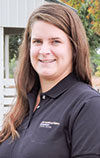As we move into the end of summer and begin to prepare our spring calves for weaning, it’s time to reevaluate our vaccination plan. Vaccines are utilized to stimulate an animal’s immune system to produce a response against a disease-causing organism. After administering the vaccine, the animal’s body creates an immune response to a killed or modified version of a pathogen so the immune system will then remember how to produce a response against the organism if it ever meets it again.
The two most common types of vaccines used in cattle herds are killed and modified-live vaccines (MLVs). Killed vaccines do not contain a live virus or bacteria. This means there is no replication with the killed product and the immune system does not develop an immune response with just one dose and will require a booster. In contrast, MLVs do contain live virus material but in a non-disease-causing version of the virus or bacteria.
When choosing a vaccine protocol for your herd, you should first consult with your veterinarian. They will be familiar with any disease risk in your local area or areas where your cows may be grazing. Many Western states require brucellosis vaccinating, tattooing and tagging of any bovine of reproductive ability between the age of 4 to 12 months. This must be done by a licensed veterinarian. In addition to this, any heifers or cows being retained for breeding should be vaccinated for other reproductive diseases such as IBR, BVD and leptospirosis.
Calves approaching the weaning stage should also be given a series of vaccinations to protect them during the stressful period of weaning and transitioning into the backgrounding phase. Pre-weaning vaccines typically include IBR, BVD, PI3 and BRSV, which are usually found in a 7- or 8-way clostridial vaccine. You should only use products labeled for use in calves nursing pregnant cows.
Because of their nature, most MLV vaccines are not recommended for use in pregnant cows. Some of these products cause a mild immune response that can cause abortion of the unborn calf the cow is carrying. Vaccinating your herd is cheap insurance; many vaccinations usually cost less than $1 per head per dose. Unvaccinated cattle are typically more susceptible to disease, which have high costs associated with treatment, loss of gain or death loss. Implementing a successful vaccination program is key to preventing morbidity and mortality, thus increasing the bottom line.










